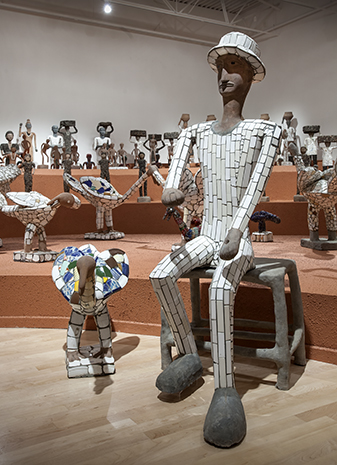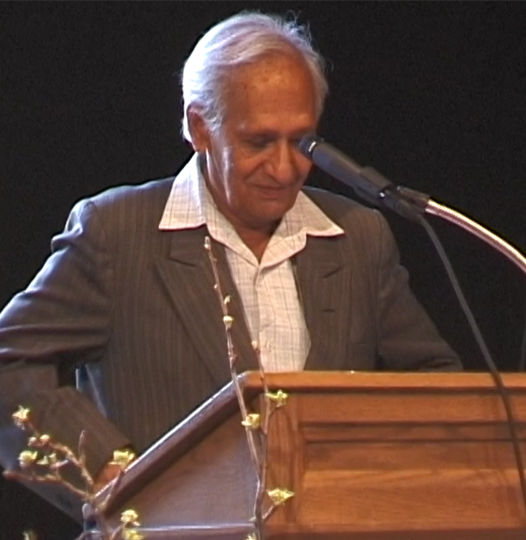The World in a Garden: Nek Chand +Dr. Iain Jackson

In 1958, Nek Chand (1924–2015) began on a pathway leading to the creation of an art environment that would transform a physically and spiritually damaged region of India. The results of his tireless efforts, spanning more than five decades, are seen today in The Rock Garden of Chandigarh.
Chand worked as a roads inspector for the massive urban development project to build Chandigarh, the modern new capital city for the territory of the same name. As he worked by day, Chand collected uniquely shaped stones and rubble from the many villages destroyed during the city’s construction. By 1965, he began to transform and arrange his collections in secret and by cover of night at a hidden location on government land outside the city. Chand worked without plans, creating his garden incrementally and organically. The result was an expansive garden of concrete figures, winding pathways, and enclosed structures.
What Chand built defies simple description. It is a cohesive yet complex space populated with a splendid array of characters he described as “immortal beings of an otherworldly kingdom.” Soldiers, children, gods, goddesses, elephants, monkeys, peacocks, and bears are among the ten thousand concrete sculptures. Elements of Mughal architecture including domed pillars, curved roofs, and pointed archways as well as vernacular motifs typical of his childhood home are seen in the structures, walls, terraces, and low-slung arches.
Over the years, the garden was threatened by demolition, closure, and vandalism. But through perseverance and with the support of family, community members, and ultimately government officials, Chand’s vision prevailed. Today, the site is India’s second most visited destination, following the Taj Mahal. In the late 1990s, Chand aided the Arts Center in becoming home to the largest body of his work outside of India.
Dr. Iain Jackson has spent years researching and documenting the landscape, architecture, and objects of the Rock Garden with the help of Chand and other professionals in the field of architecture. The exhibition included his scaled survey drawings of the garden as well as a book detailing more than two thousand objects that Chand collected.
Through the design of the gallery space, this exhibition presented the important connection between the terrain of the garden and the rich variety and multiplicity of the sculptures therein.
The Artists
The Responders
This exhibition is supported in part by a grant from the Wisconsin Arts Board with funds from the State of Wisconsin, the Wisconsin Department of Tourism, and the National Endowment for the Arts. Funding was also provided by the Institute of Museum and Library Services, Kohler Trust for the Arts and Education, Kohler Foundation, Inc., Herzfeld Foundation and Sargento Foods Inc. The Arts Center thanks its many members for their support of exhibitions and programs through the year. The John Michael Kohler Arts Center is a 501(c)(3) (nonprofit) organization; donations are tax deductible.
The Road Less Traveled 50th anniversary program was conceived by Amy Horst, deputy director for programming. The exhibitions series was organized and curated by Arts Center Curator Karen Patterson. Special thanks to Emily Schlemowitz, assistant curator, for the curation of Driftless: Nick Engelbert & Ernest Hüpeden and Folk & Fable: Levi Fisher Ames & Albert Zahn, and Amy Chaloupka, guest curator of The World in a Garden: Nek Chand and Volumes: Stella Waitzkin.






